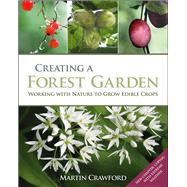
Martin Crawford has spent more than 20 years in organic agriculture and horticulture, and is director of the Agroforestry Research Trust, a nonprofit charity that researches temperate agroforestry and all aspects of plant cropping and uses, with a focus on tree, shrub, and perennial crops. The Trust produces several publications and a quarterly journal, and sells plants and seeds. He is the author of several books, including A Forest Garden Year and How to Grow Perennial Vegetables.
The New copy of this book will include any supplemental materials advertised. Please check the title of the book to determine if it should include any access cards, study guides, lab manuals, CDs, etc.
The Used, Rental and eBook copies of this book are not guaranteed to include any supplemental materials. Typically, only the book itself is included. This is true even if the title states it includes any access cards, study guides, lab manuals, CDs, etc.